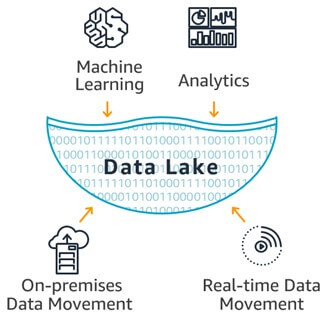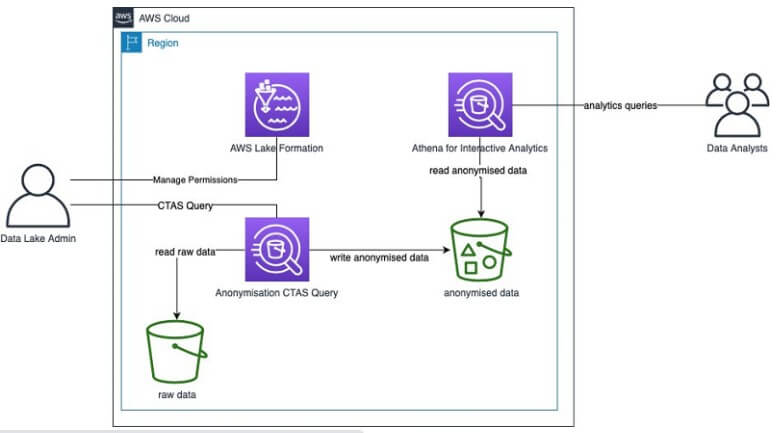With the rise of cloud computing, companies are constantly migrating their legacy data warehouses or analytical databases to the cloud. However, one challenge that we might come across while doing so is letting go of our monolithic thinking and design and fully benefitting from the modern cloud architecture. In this article, we’ll learn the model for creating a flexible, scalable, and cost-effective data analytics platform in the AWS cloud. But first, let’s understand what the process of Data Analysis is.
Process of Data Analysis
Data Analysis is the science of analyzing, cleansing, transforming, and modeling data to discover valuable information, recommending conclusions, and assisting decision-making. A data analyst requires high technical ability, focusing on complex databases, statistics, and formulas that need skillsets to interpret data such as DATA mining, OLAP, SQL, Reports, statistics, etc.
So, how can we use AWS Cloud Computing to build a Data Analytics Platform?
Amazon Web Services offers an integrated suite of services that provides everything we need to quickly and easily develop and drive a data lake for analytics. AWS-driven data lakes can manage the agility, scale, and flexibility that is required to unite different data and analytics processes to acquire deeper insights in ways that conventional data warehouses and data silos cannot.
What is Data Lakes?
To create your data lakes and analytics solution, Amazon Web Services offers the most expansive collection of services to move, store, and interpret your data.
 Image Source: https://aws.amazon.com/
Image Source: https://aws.amazon.com/
Data Movement: Extracting data from various sources such as (AWS S3 Bucket, Dropbox, SFTP, FTP, Google Drive, or On-Premise HDD) and various types of data structures as (DOC, EXCEL, JSON, XML, CSV, PDF, or TEXT).
 Image Source: https://newsakmi.com/
Image Source: https://newsakmi.com/
Creating Data Lakes With AWS
To create data lakes and analytics solutions, Amazon Web Services offers the most extensive set of services to move, store, and analyze the data. The first step in creating data lakes on AWS is to move the data to the cloud. Any physical limitations of bandwidth and transfer speeds reduce the capability of moving the data without any major disruption, high expenses, and time. To make data transfer smooth and flexible, Amazon provides a wide range of options to transfer data to the cloud. To develop ETL jobs and ML Transforms for the data lake via SSIS or AWS Glue Services.
The AWS Services that you can make use of for Data Movement are:
- Direct connect for On-Premise Data Movement
- IoT for Real-time Data Connect
Data Lake: Store various data types securely on diverse Database Systems such as (MySQL, MS SQL, ORACLE, MongoDB, DynamoDB) from gigabytes to exabytes.
As soon as the data is cloud-ready, AWS makes it easier to store data in any format, securely, and at a large scale with Amazon S3, AWS Redshift, or Amazon Glacier. To make it simpler for the end-users to identify the relevant data to make use of in their analysis, AWS Glue automatically produces a single catalog that is searchable and queryable by users. The AWS Services you can employ for Data Lake are:
- S3 for Cloud Storage
- Glaciar for BackUp and Archive
- Glue for Data Catalogue
Analytics: Analyze your data with the broadest range of analytics services or algorithms.
AWS offers the widest and most cost-efficient set of analytic services that operate on the data lake. Every analytics service is built for a broad range of usecases like interactive analysis, big data processing, making use of the Apache Spark and Hadoop, real-time analytics, operational analytics, dashboards, data warehousing, and visualizations.
The AWS Services can be used for Analytics are as below:
- EMR for Big Data Processing
- Kinesis for Realtime Analytics
- Redshift for Data Warehousing
- Athena for Interactive Analysis
- Elasticsearch for Operational Analytics
- QuickSight for Dashboard and Data Visualization
Machine Learning: Predict future results and direct actions for speedy responses.
Now, for predictive analytics use cases, AWS offers a wide range of tools and machine learning services that operate on your data lake on AWS. ML has powered Amazon.com’s supply chain, forecasting, recommendation engines, fulfillment centers, and capacity planning at Amazon. The AWS Services we can make use of for Machine Learning (ML) are as follows:
- Deep Learning AMIs for Frameworks and Interfaces
- Sagemaker for Platform Services
Conclusion
As long as you are curious and capable of learning the latest and better technologies, you can develop and operate a robust and modern data analytics platform. This data analytics platform on AWS is an indispensable part of the digital transformation and AI transformation of every organization that aspires to stay relevant and competitive in today’s industry.